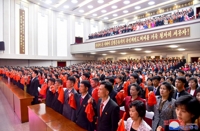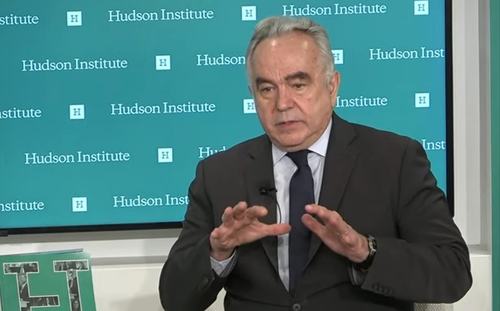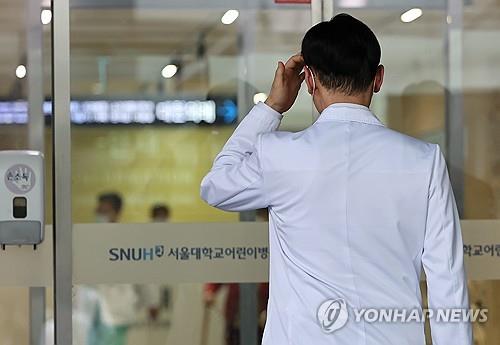(News Focus) After merger, Samsung C&T faces task of boosting shareholder value
By Kim Seung-yeon
SEOUL, Sept. 1 (Yonhap) -- When Samsung C&T Corp. and Cheil Industries Inc., two key units of South Korea's top conglomerate Samsung Group, got the green light from shareholders in July on their planned merger, most local media described the outcome as "Samsung again proving its power."
This was no overstatement. Samsung C&T, the construction arm of Samsung Group, managed to get the go-ahead on the 8.9 trillion-won (US$7.52 billion) deal with nearly 70 percent of the vote, despite strong opposition from U.S. hedge fund Elliott Associates who sought to block the merger, calling it a low-ball deal.
The builder had every chance of losing to Elliott at the shareholder meeting on July 17. The vote was widely expected to be close, with a significant portion of foreign stakeholders apparently against the merger bid.
But its impassioned plea for support via a massive ad campaign, along with the public hostility reignited toward "foreign money attacking a home brand," helped the company salvage what is deemed as a vital process for the leadership transfer at South Korea's most powerful conglomerate.
Now, market watchers say Samsung is tasked with having to "return the favor" to shareholders in the post-merger era while moving on to the next steps necessary for a smooth succession to Lee Jae-yong, the only son of the group's tycoon Lee Kun-hee, who's been bedridden for over a year after a heart attack.
In the runup to the crucial shareholder meeting, chiefs of the two Samsung units vowed to bolster shareholder value and improve corporate governance if the merger is approved. Cheil Industries, the group's de facto holding firm, said it will raise the dividend payout ratio to 30 percent by 2020 from the current 21 percent.
Market watchers say it can be a daunting task for the newly merged entity -- which will now operate under the builder's name -- as such a rosy outlook is only guaranteed if it continues to post growth and deliver good earnings in the coming years. The new Samsung C&T said it will work to generate an annual 60 trillion won in revenue over the next five years.
"The bulk of Cheil Industries' current businesses center on domestic-focused sectors, such as fashion and leisure. How to bring them onto a global level using Samsung C&T's resources will be key to growth for the new Samsung C&T," said Yoon Tae-ho, an analyst at Korea Investment & Securities Co.
The new Samsung C&T pledged to create synergy from both units to become a leading global company whose businesses range from construction and biomedicine to food.
"Its bio business, for which it is pushing for a Nasdaq listing of its subsidiary Bioepis, will be another gauge of Samsung's capability in the post-merger era," Kim Jang-won, an analyst at IBK Securities Co., said in a report.
Neither Samsung C&T nor Cheil Industries has been so profitable in recent quarters, although that was mainly due to a slowing economy here and abroad. The companies reported respective on-year drops in operating profit of 46 percent and 37 percent for the second quarter.
"(Its pledge) is a shaky promise that asks investors for much patience, since we won't see the results in the short term," Yoon added.
Kim Sang-jo, an economics professor at Hansung University, said such uncertainties could stoke fresh doubts among investors and prompt them to question Samsung C&T's outlook down the road.
"In a way, shareholders made their bets on the possibility that the new Samsung C&T can and will fare well. But because of such high expectations, Samsung will be prone to unexpected obstacles every step of the way toward the end of the succession," he said.
Samsung Group faces an unfinished job of streamlining its complex cross-shareholding structure. Many analysts expect that the next move after the merger will probably come from Samsung Electronics Co., the crown jewel of the group.
The likeliest scenario for the world's top smartphone and electronics maker is that it splits itself into two holding companies -- one as an investment firm and the other to run the business -- and has the investment holding company merge with the new Samsung C&T.
This will put Samsung C&T at the top of the hierarchy as the de facto holding company, with a combined 40 percent of its shares held by Lee's three children.
By doing so, the group structure will not only be reshaped to solidify the Lee family's ownership control but also be simplified to Samsung C&T controlling Samsung Electronics and Samsung Life Insurance Co., which in turn will each control the rest of related tech and financial affiliates under its wing.
But market watchers say Samsung needs to convince its shareholders to support such a plan as the process will require their approval. And it can be more time-consuming than ever, they say. Samsung Electronics is 51 percent owned by foreigners.
In the meantime, Samsung Electronics might also buy back its own shares at least a couple of times in the next one or two years, as it will boost Samsung C&T's voting rights on the tech unit after they merge together, according to analysts.
"Samsung learned its lesson from the battle with Elliott that not all shareholders would agree with its plan. It will take the restructuring process as slowly as it can, seeking ways to win support from possible opponents while pondering various options for the restructuring," Yoon added.
elly@yna.co.kr
(END)
-
 S. Korea marks 30th anniv. of Korean Pavilion at Venice Biennale with contemporary art
S. Korea marks 30th anniv. of Korean Pavilion at Venice Biennale with contemporary art -
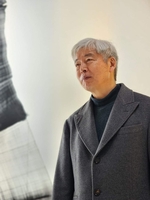 Artist Lee Bae captures ethereal Korean aesthetics at Venice Biennale
Artist Lee Bae captures ethereal Korean aesthetics at Venice Biennale -
 Facebook page unveils photos of BTS member V in counter-terrorism unit gear
Facebook page unveils photos of BTS member V in counter-terrorism unit gear -
 Ateez member Yunho throws first pitch at MLB match between Dodgers, Mets
Ateez member Yunho throws first pitch at MLB match between Dodgers, Mets -
 Gov't likely to accept university chiefs' request to lower med school enrollment quota
Gov't likely to accept university chiefs' request to lower med school enrollment quota
-
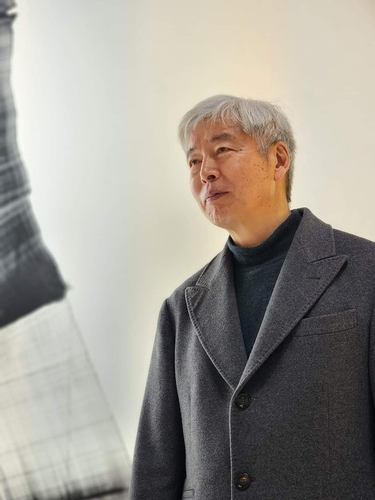 Artist Lee Bae captures ethereal Korean aesthetics at Venice Biennale
Artist Lee Bae captures ethereal Korean aesthetics at Venice Biennale -
 S. Korea marks 30th anniv. of Korean Pavilion at Venice Biennale with contemporary art
S. Korea marks 30th anniv. of Korean Pavilion at Venice Biennale with contemporary art -
 Facebook page unveils photos of BTS member V in counter-terrorism unit gear
Facebook page unveils photos of BTS member V in counter-terrorism unit gear -
 Gov't likely to accept university chiefs' request to lower med school enrollment quota
Gov't likely to accept university chiefs' request to lower med school enrollment quota -
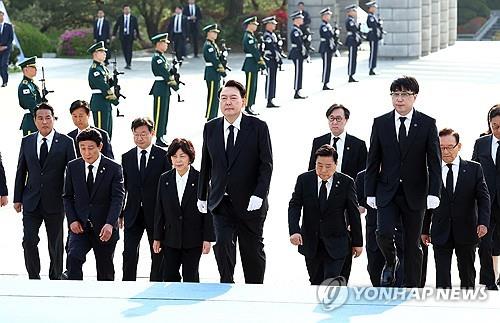 Yoon's approval rating sinks to lowest point since taking office
Yoon's approval rating sinks to lowest point since taking office
-
 (LEAD) N. Korea sends economic delegation to Iran amid suspected military cooperation
(LEAD) N. Korea sends economic delegation to Iran amid suspected military cooperation -
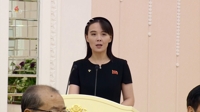 N.K. leader's sister slams joint S. Korea-U.S. military drills
N.K. leader's sister slams joint S. Korea-U.S. military drills -
 Author of ADOR's 'internal document' refutes allegations of spinoff plot
Author of ADOR's 'internal document' refutes allegations of spinoff plot -
 Yoon says N. Korea must not dare challenge S. Korea
Yoon says N. Korea must not dare challenge S. Korea -
 U.S. will take steps for three-way engagement on nuclear deterrence with S. Korea, Japan: Campbell
U.S. will take steps for three-way engagement on nuclear deterrence with S. Korea, Japan: Campbell


















